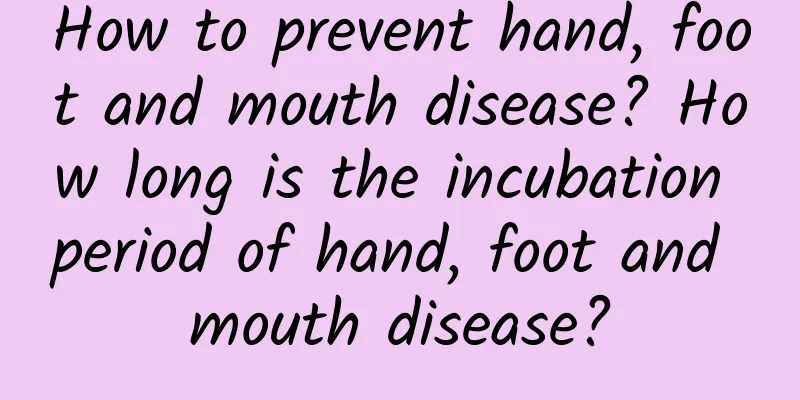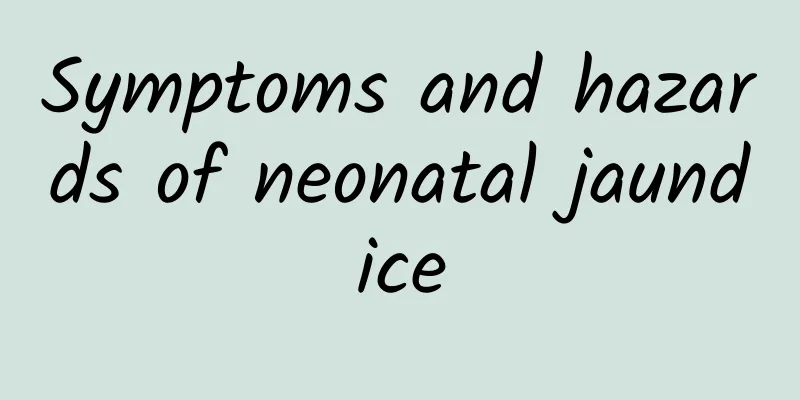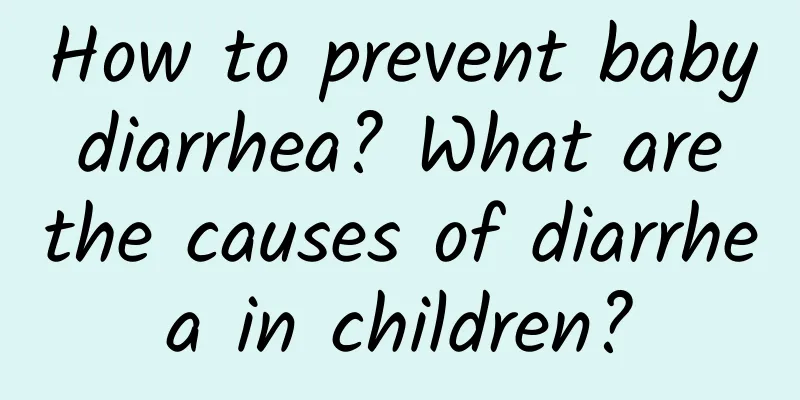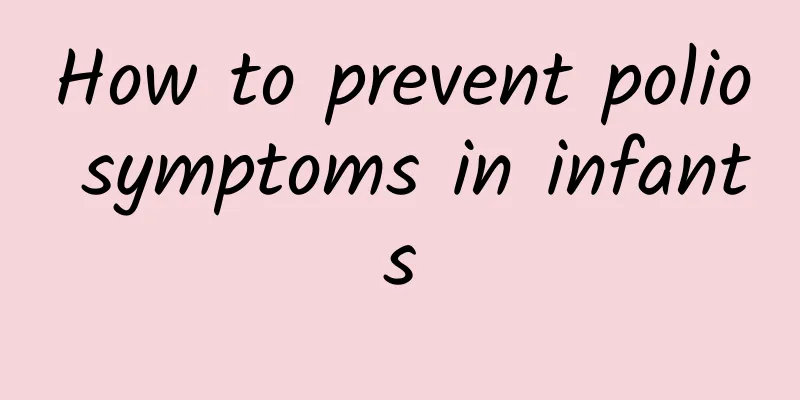How to prevent hand, foot and mouth disease? How long is the incubation period of hand, foot and mouth disease?

|
Hand, foot and mouth disease is an infectious disease caused by enterovirus. There are more than 20 types of enterovirus that can cause hand, foot and mouth disease, among which Coxsackievirus A16 and enterovirus 71 are the most common. So, how to prevent hand, foot and mouth disease? Let's learn about it together with the editor! 1. How to prevent hand, foot and mouth disease 2. Incubation period of hand, foot and mouth disease 3. Transmission routes of hand, foot and mouth disease How to prevent hand, foot and mouth disease Develop good hygiene and eating habits for children: Wash your children's hands with soap and hand sanitizer before meals, after defecation, and after going out. Do not let children drink raw water, eat raw or cold food, or eat leftovers. Let children rest well and get some sun to enhance their immunity. Home hygiene: Pay attention to maintaining a clean home environment, ventilate the room frequently, wash and dry all clothes and bedding frequently, especially those of children. Nursery schools and primary schools: Keep classrooms and dormitories well ventilated. Immediately disinfect toys, bedding, tables and chairs, and also disinfect canteens, toilets, classrooms, etc. Hand, foot and mouth disease incubation period The incubation period of hand, foot and mouth disease is generally 3-6 days. At the beginning of the disease, there are symptoms similar to colds, such as fever, cough, runny nose, nausea, vomiting, etc. The fever can last for 4-5 days. Among other symptoms, the initial symptoms are corn-like maculopapules or blisters with redness around them. Generally, there is no pain or itching, and no trace is left after recovery. In addition, there will be painful ulcers in the mouth, which will cause difficulty in swallowing and loss of appetite. Flat or convex maculopapules or herpes appear on the hands, feet and other parts. The rash is not itchy. The maculopapules turn from red to dark in about 5 days and then disappear. How hand, foot and mouth disease is transmitted Mode of transmission: mainly through close contact between people, and can be indirectly transmitted through hands, towels, cups, toys, tableware, bedding, etc. contaminated by saliva, herpes fluid, feces, etc. The virus in the patient's throat secretions and saliva can be transmitted through droplets. If you come into contact with water contaminated by the virus, you can also be infected through water. Susceptible population: Patients with hand, foot and mouth disease are mainly preschool children, especially those under 3 years old, with the highest incidence rate. |
<<: Early symptoms of hand, foot and mouth disease Early symptoms of hand, foot and mouth disease
Recommend
What are the key points in diagnosing polio?
Polio is a common pediatric disease. Nowadays, ma...
How much saline is appropriate to add to 2ml of budesonide? What are the functions and effects of budesonide?
The most important drug in nebulization therapy i...
How to check if your child has ADHD
I believe that many parents are not very clear ab...
What to do if your baby has phlegm in his throat? How to treat phlegm in your baby's throat
The baby's immunity is relatively low, and it...
What medicine is good for children with bacterial tracheitis and cough
When bacterial infection in children causes trach...
How to care for a one-year-old baby with a cold, cough and phlegm
Colds are mostly caused by inflammatory stimulati...
What is the main cause of eczema in children? Is it environmental factors?
Children with mild eczema symptoms have a chance ...
What causes breast milk jaundice?
In our lives, many people do not know what breast...
What medicine should I take for jaundice in newborns?
When a newborn baby has jaundice, it is usually n...
Is muscular dystrophy hereditary?
Muscular dystrophy is a hereditary disease with m...
What food to eat to treat acute laryngitis in children
Spring and autumn are the peak seasons for the re...
Phenylketonuria details
How much do you know about the details of phenylk...
What medicine is good for children with pneumonia and bronchitis?
Pneumonia and bronchitis in children require a do...
What should be done to check for acute laryngitis in children
What kind of examinations should be done for acut...
What foods are good for the body when you have influenza? Influenza patients should eat more of these 5 foods
1. Choose easily digestible liquid food, such as ...









